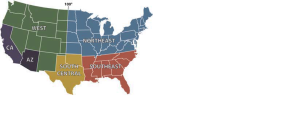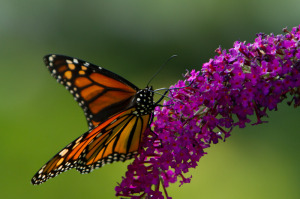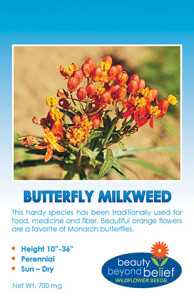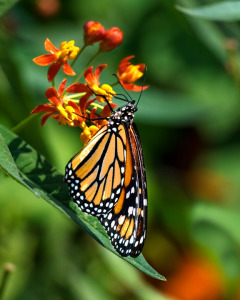Plant Milkweed and Nectar Flowers for Monarchs
From: Monarch Joint Venture (www.monarchjointventure.org)
| Just out! This July 2022, the IUCN put the Migratory Monarch Butterfly on the Red List of endangered species. From the World Wildlife Fund (https://www.worldwildlife.org/stories/migratory-monarch-butterfly-now-classified-as-endangered) “Known for its bright orange colors and its incredible annual migration, the migratory monarch butterfly is now classified as “Endangered” by the International Union for Conservation of Nature (IUCN). During the last three decades, the eastern migratory monarch butterfly population has decreased by more than 80%, according to WWF monitoring reports. One of main drivers in the decline of the migratory monarch’s population is the use of herbicides in the U.S., resulting in a loss of milkweeds, essential for monarchs reproduction. Additionally, climate variations in North American during the summers of 2004 to 2018, affected both the presence of milkweed and the butterflies’ life cycle. Forest degradation in the butterfly’s Mexican reserve was once a concern but efforts toward sustainability and collaborations with local communities have kept this threat at bay. With the monarch classified as Endangered, “The governments of Canada, the United States, and Mexico have the scientific basis to collaborate with conservation organizations, the private sector, and civil society in all the initiatives that seek to restore, conserve, and sustainably manage the ecosystems for the reproduction, migration, and overwintering of this emblematic species.” In other words: We have the science, we have the answers; Now it is up to us to take action.” Read more from the WWF HERE Monarchs cannot survive without milkweed. Monarch caterpillars need milkweed plants (Asclepias spp.) to grow and develop, and female monarch butterflies | |||||||||||||||||||||||||||||||||||||||||||||||||||||||||||||||||||||||||||||||||||||||||||||||||
| Milkweed Regions There are many native milkweed species in  each of the six “Milkweed Regions” shown on this map. The species below are known to be used by monarchs, and are easy to establish. To Purchase Seeds: | |||||||||||||||||||||||||||||||||||||||||||||||||||||||||||||||||||||||||||||||||||||||||||||||||
| |||||||||||||||||||||||||||||||||||||||||||||||||||||||||||||||||||||||||||||||||||||||||||||||||
| Note: Be careful to not purchase or plant tropical milkweed, Asclepias curassavica, if you are in a temperate region. These plants are becoming naturalized and are suspected in ‘luring’ overwintering monarchs into breaking their dormancy and becoming reproductive which can also spread parasites endangering the population further. To see what milkweeds grow in your state: http://monarchwatch.org/bring-back-the-monarchs/resources/milkweeds-by-state | |||||||||||||||||||||||||||||||||||||||||||||||||||||||||||||||||||||||||||||||||||||||||||||||||




